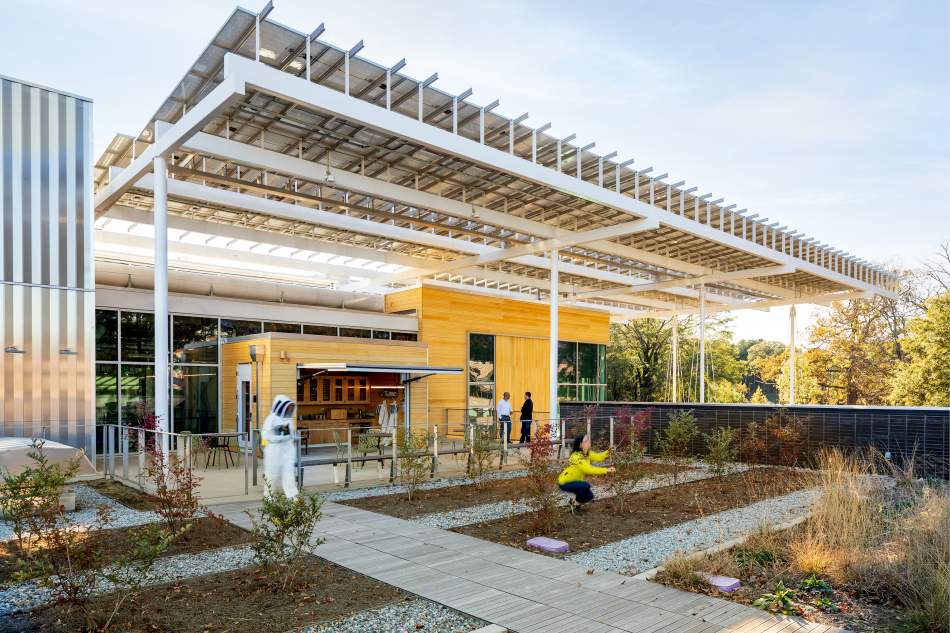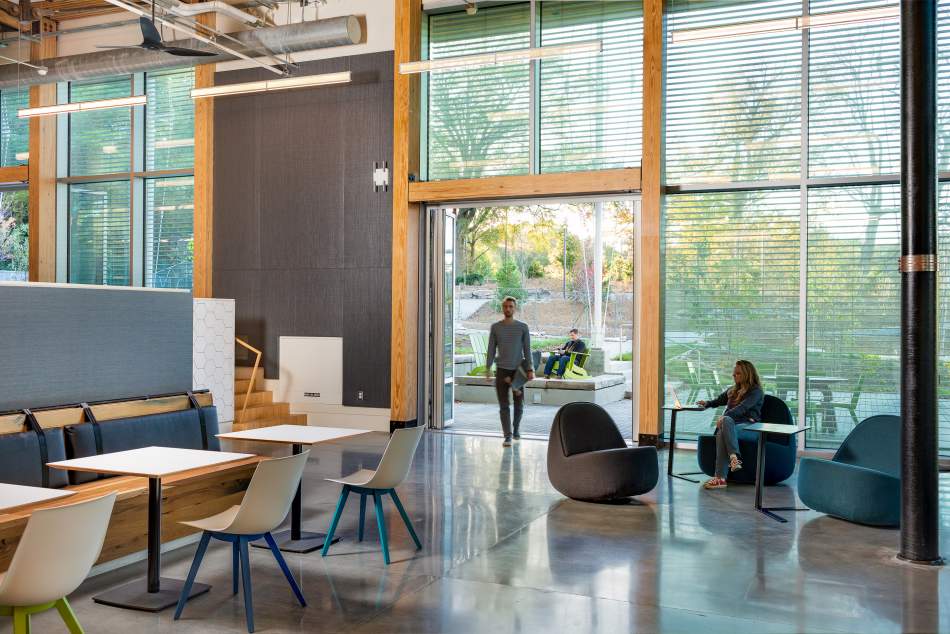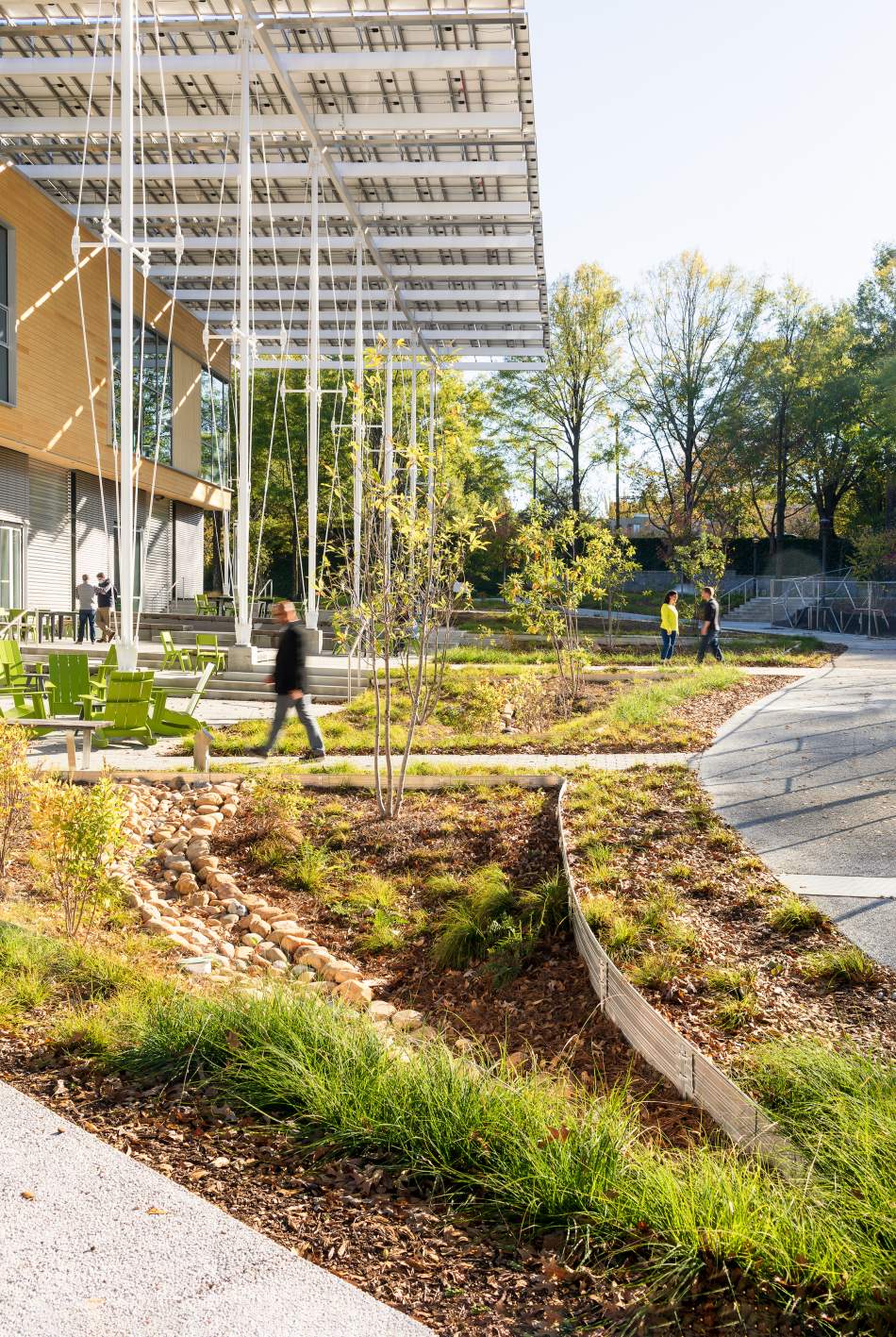They said it was impossible in the humid, subtropical American South. That no building can be totally self-sustaining while keeping inhabitants comfortable year-round.
But the Kendeda Building at Georgia Tech has officially proven doubters wrong.
Georgia Tech officials announced today—Earth Day, fittingly—that following a rigorous verification process since it opened to the public in late 2019, The Kendeda Building has become the first project of its scale in the Southeast to achieve Living Building Challenge certification.
That’s also a stamp from the International Living Future Institute that the building, tucked in the heart of Tech’s campus, is among the greenest on the planet.
 The building's rooftop garden and apiary overlooks Midtown Atlanta. Photography by Greg Willett; courtesy of The Kendeda Fund, Georgia Tech
The building's rooftop garden and apiary overlooks Midtown Atlanta. Photography by Greg Willett; courtesy of The Kendeda Fund, Georgia Tech
Ángel Cabrera, Georgia Tech president, called the project “a tribute to the power of human ingenuity” and a laboratory to help “tomorrow’s leaders … advance technology and improve the human condition,” according to a statement provided to Urbanize Atlanta.
The Living Building, as it’s colloquially been called, is not connect to city utilities. Its water is captured from the sky, stored in a 50,000-gallon cistern, cleaned, and used for all purposes, including drinking. Its composting toilets create fertilizer for the functional, landscaped grounds. And huge solar panels on the roof have so far generated 225 percent of energy needed to keep the lights on and cool the airy interiors with massive fans.
 Student commons are dotted throughout the property. Photography by Greg Willett; courtesy of The Kendeda Fund, Georgia Tech
Student commons are dotted throughout the property. Photography by Greg Willett; courtesy of The Kendeda Fund, Georgia Tech
The Living Building Challenge requires a year-long evaluation. The energy performance—and the fact the ADA-accessible Kendeda Building has produced 15 times the clean water needed so far—earned high marks.
Designs were a team effort between The Miller Hull Partnership and Atlanta’s Lord Aeck Sargent architecture firm. The project was funded with a $30-million Kendeda Fund grant to Georgia Tech.
 Landscaping that functions as rainwater filtration. Photography by Greg Willett; courtesy of The Kendeda Fund, Georgia Tech
Landscaping that functions as rainwater filtration. Photography by Greg Willett; courtesy of The Kendeda Fund, Georgia Tech
With a cost of $544 per gross square foot, its creators acknowledge the project was pricey to build—about 13 percent more expensive than a comparable building on campus.
But they’re hopeful its cost savings through net-positive water and energy pay off, and that its lessons pay dividends with college students aspiring to change the world.
“Students passing through The Kendeda Building today will be the engineers, architects, scientists, product designers, urban planners, and policymakers of tomorrow,” said Diana Blank, Kendeda Fund founder. “We want students and faculty to embrace the challenge, continually asking, ‘How can we improve on this?’”
Have a closer look in the photo gallery above.
• Georgia Tech's sprawling new EcoCommons confront ugly racial past (Urbanize Atlanta)






